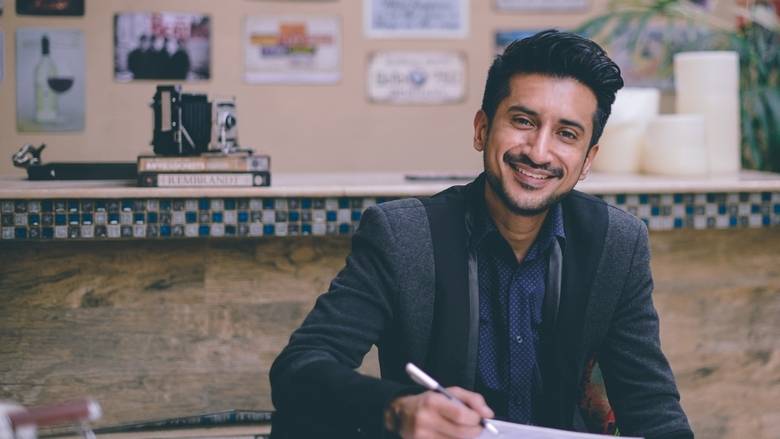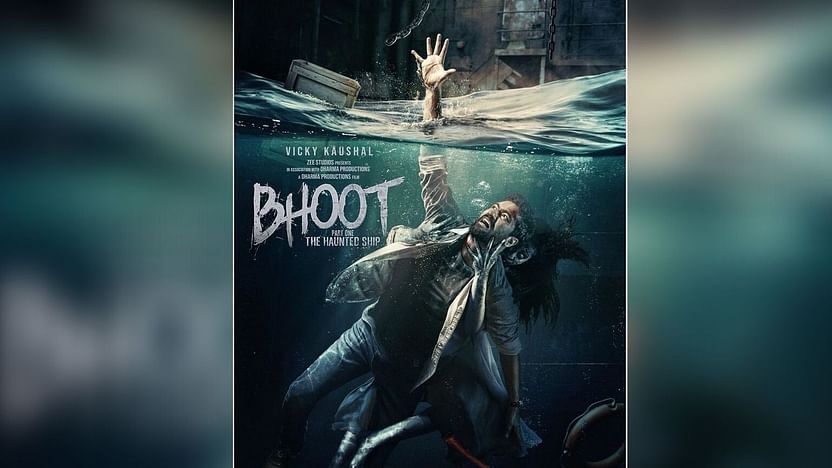They are unapologetically raw, deliciously unhinged, groomed and coiffured, yet wild and carefree. They swear, they smoke, they drink, and they define and redefine their attitudes to morality. They are unflinching in their support to each other and like hurricanes, waiting to uproot hurdles that come in their way. Asim Abbasi’s Churails – a Zindagi Original, part of Zee5 Global that released today is a satirical thriller, set in Karachi and talks about four women from different walks of life who come together to open a covert detective agency that aids abused, mistreated and harassed women, who stand up in the face of patriarchy. The main protagonists are Sarwat Gillani, Meher Bano, Nirma Bucha and Yasra Rizvi. Manju Ramanan speaks to Asim Abbasi, the director of this empowering web series.
An empowering series with all four spit-fire women characters of different age groups, types and backgrounds. How did the ‘Churails’ come about?
Thank you. I tried to raise the right questions through this series. In my earlier film Cake, I tried to explore family dynamics and women and this one talks about sisterhood. I had already written Sara’s character for another project, where she was shown pregnant and practicing law. That character transformed into her role in Churails. Some of the most oppressed women also come from very wealthy families and they are pushed to being perfect home-makers after they quit their jobs and then epitomized as the ‘perfect wife’. I wanted to say that no matter, what your privileges are, you can connect to other women because you do share a history of oppression. Sara and Jugnu that way represent the western world, while Zubeida and Butool represent the East. And they all can unite, is the premise of the story.
You specialize in crushing stereotypes, but there is always a good dose of compassion in the way you portray women…
That comes from just having empathy and portraying characters that are flawed. In stereotypes, you go into black and white, there are no shades of grey. When you see flawed characters – you tend to root for them since we as audiences are as flawed as them.
So, the damsels are not in distress?
No, they are not. The series has the archetypal toxic men but the girls are not damsels in distress. One of them is a boxer too, the other a criminal, one a lawyer and one a wedding planner.
Everything that is so called ‘inappropriate’ is attacked in the first episode itself?
I wanted to address the world we live in and then build a world that is a bit removed from reality. Apart from these women, there are other women too, like the spoilt bride whose indulgent mom looks at the wedding decoration disdainfully and demands that her “baby wants soul.” We are addressing misogyny and that women can be supremely patriarchal too and that it is easier being a man.
Also, the moral compass you portray is pretty democratic?
The issue of moral ambiguity is important to us. We do ‘questionable’ things for reasons best known to us and we don’t need to justify it. A woman can have desire and seek to fulfil it, without the world telling her she is right or wrong. I am making these characters three dimensional as we are a bundle of contradictions ourselves. Once you put these characters together, they don’t have clear-cut decisions. They are grappling for solutions and that makes them real. I don’t want everyone to love them – they make mistakes and you can hate them too. They are not epitomes of perfection and they have their own avatars. And each woman has her own beauty, knowledge, power, execution. They all represent different aspects of womanhood. I looked up mythology and found references of a woman being a creator and the destroyer, like mother-nature.
Is the alpha male missing in your narrative?
Toxic masculinity is represented through characters. But there is resistance from women. They are out to get you if you cross them. But they have to fight.
You were a banker for ten years and then cinema happened?
I was always interested in story-telling but didn’t take it up as a profession. I did the ‘good boy’ thing for a bit, but the germ of film-making didn’t leave me. I worked 14-16 hours a day as an investment banker with a burning desire to be a writer someday. After ten years, I had those difficult conversations with my people and with my parents’ blessings, started writing. The escape became the profession eventually.
With a subject that is risqué, how do you expect backlash?
Since it is for the web, it allowed me this freedom. I didn’t want to be on a backfoot. I didn’t want to tell stories in a self-censored way. Zee5 came to me and asked me to do it in my style. I would make these episodes, send it to them and they always had a positive response and pushed me in the right direction. That gave me a lot of confidence. The OTT, unlike films released in theatres, is not tied to box office results, it isn’t tied to regulators that compute content. It had to be unabashedly open. I need a backlash. I am not in La La land thinking that one film can change things. It will need constant push. Even if two men in the audience understand that men are largely unwilling to share power and that, if we open our hearts a little and share that power, we will achieve so much more.
Across TV, films and the OTT, do you see the representation of women evolve?
To me, serials and soaps are in the most regressive territory. They are designed for boosting TRPs and not too much experimentation is happening there. Cheekh was good. Even if they are successful, they are few and far between. We aren’t doing too many of them to make a difference. A lot of ‘feminist’ shows on TV that seem to be pushing women to the forefront, still end up falling for the trap that they need a man to rescue them. Cinematic content is moving forward for the multiplex crowd. Stories are being told in smaller budget films. Look at Andhadhun, Badhai Ho or Thappad. The narrative doesn’t have a woman in a romantic lead supporting the hero in his bravery. OTT has helped us take that leap. The platforms need good content to diversify their portfolio and build a library of assets. They have passed the rein back to the content creators and we are in the position now, to push for more empowering stories.
And there are many more of the Churails to come?
Yes, lots more. You will watch them all in episode 2. Also, all of this is in a happy canvas though there will be serious and dark moments. I wanted it to be non-drab. I wanted a thrilling ride of a story that was entertaining as well as engaging. I wish a world like this existed, that a Halal Designs existed, that a Churails detective agency existed. The film is about 80 per cent real and 20 per cent hyper real. It is rich but has a slight feeling of other worldliness. It belongs to the subcontinent but to also set in a world slightly removed from it. A world we are trying to create.
Strangely, there existed a detective agency like this for real?
I wrote this and tried to look for real instances and found it. Reality is stranger than fiction. A lot of these women existed in real life.
Do you see the word ‘Churail’, take another meaning after the series?
Yes, certainly! We were trying to subvert the word and its meaning. The word is used to talk about aggression, courage and ambition in women. But I firmly believe that the fear of women is what drives men to label them as a ‘Churail’.















